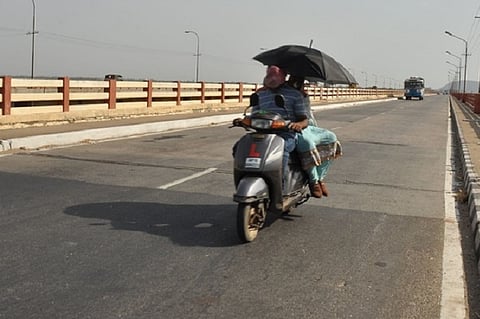These health issues are rampant during summers, and here’s how you can deal with them
These health issues are rampant during summers, and here’s how you can deal with them
With India experiencing one of its hottest summers, here are some of the heat-triggered health issues you should know about and how to fight them.
Heat Rashes
Heat rashes are one of the most common ailments caused by heat. Hot and humid weather is the prime time for heat rashes. These appear when perspiration gets trapped under the skin due to clogged sweat ducts.
“Treating heat rash is simple and usually does not require medical assistance. The best treatment for heat rash is to avoid a hot, humid environment and to try to remain in cooler, less humid conditions,” he recommended.
Try to keep the affected area dry, and wear light, loose clothing. Dusting powder may be used to increase comfort, but avoid using ointments or creams because they keep the skin warm and moist and may make the condition worse, he added.
Heat Exhaustion
Heat exhaustion is the body's response to an excessive loss of water and salt contained in sweat as a result of engaging in physical activity in a hot environment. The body temperature may be normal or mildly elevated, but not above 40 degree Celsius.
“It often occurs in individuals who are not accustomed to working or exercising in the heat,” said Dr. Krishnakumar, a practicing physician residing in Bangalore. The symptoms may range from minor irritations to more prominent symptoms, however the affected individual will not experience the central nervous system indicators noted with heat stroke.
Symptoms of heat exhaustion include elevated body temperature, heavy sweating, paleness, muscle cramps, fatigue, nausea and headache.
Many cases of heat exhaustion can be treated outside of the hospital setting, however it is important to understand that heat exhaustion can progress to heat stroke if not properly addressed in a timely manner, Dr. Krishnakumar explained.
Heat Stroke
Heat stroke is a medical emergency that requires immediate medical attention. It is the most severe form of heat-related illness, and it can sometimes lead to death or permanent disability. Heat stroke occurs when the body's ability to regulate its internal temperature has failed. Heat stroke is sometimes referred to as sunstroke.
“If the body's temperature rises rapidly in excess of 40 degrees Celsius, it can lead to damage to the brain and other vital organs. Generally, the extent of injury depends on the duration of exposure to excessive heat and the peak temperature attained,” said Dr. Gigilakshmi, a general physician from Kerala.
As this is a dangerous condition often leading to unconsciousness, special care is to be taken in case if we ever administer help. Firstly, get the person to a cool indoor or outdoor area and remove restrictive clothing. Cool the person rapidly using whatever methods you can.
“If possible, immerse the person in a tub of cool water or place them in a cool shower. You may also spray them with lukewarm water and blow cool air from a fan towards them. If the humidity is low, loosely wrap the person's body in a cool, wet sheet and fan him vigorously. Otherwise, place ice or cold packs to the armpits, neck, and groin areas,” advices Dr. Gigilakshmi.
Monitor body temperature, and continue cooling efforts until the body temperature drops to about 38 or lower in order to prevent overcooling the affected individual.
Heat Cramps
Heat cramps usually affect people who sweat significantly during strenuous activity. “This sweating depletes the body's salt and moisture. The low salt level in the muscles causes painful muscle cramps, often following exercise,” says Dr. Krishnakumar.
What are the signs and symptoms of heat cramps?
Heat cramps are muscle pains or muscle spasms, usually in the abdomen, arms, or legs) that may occur in association with strenuous activity. “Heat cramps may also be a symptom of heat exhaustion. If the affected person has heart problems, seek medical attention for heat cramps,” he added.
As treatment for heat cramps, stop all activity by the patient, sit and rest in a cool place. Drink water or a sports beverage, and eat a salty snack. Passively stretching will also help the affected muscles. Do not return to any vigorous activity for a few hours after the cramps have subsided as further exertion can lead to heat exhaustion.
“Seek medical attention for heat cramps if they do not subside in 1 hour,” Dr. Krishnakumar clarified.
Heat Syncope i.e Fainting
Heat syncope is a fainting episode that occurs in the heat, either during prolonged standing or exercise, or when rapidly standing from a lying or sitting position. It typically occurs in individuals who are not acclimatized to the heat. Dehydration can also contribute to this condition.
“The symptoms of heat syncope include dizziness or light-headedness and fainting,”, says Dr. Gigilakshmi.
Heat Syncope should be dealt with delicately. Make sure that the affected person rest in a cool place and lie down with legs elevated above the level of the heart. Drink lots of water.
Seek immediate medical attention for repeated episodes of fainting, or if the individual experiences chest pain, seizures, or confusion, she advised.

